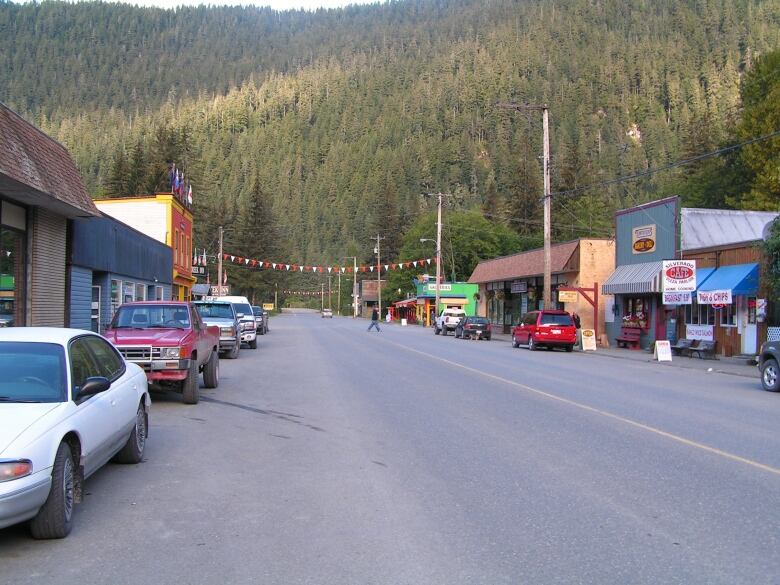3 small Canadian border towns with unusual ties to their neighbo(u)rs
Proof that small-town neighbourliness knows no borders.

Small towns are often praised for their tight-knit sense of community and neighbourliness, and in towns right across the country, that neighbourliness knows no borders — literally. These twin towns share all types of things, and have had their cultures shaped by being right along the world's largest land border.
Campobello Island, N.B./Lubec, Maine
Welcome to Campobello Island, home of the world-famous Fogfest, as well as some excellent whale watching. It's also the former summer home of President Franklin Delano Roosevelt. At the turn of the last century, Campobello was a summer colony, where well-to-do members of Montreal, Boston, and New York society would go to escape the city heat. One of those vacationing families was the Delano-Roosevelt clan, who bought a property in 1883. The future president spent his childhood summers on Campobello, and then bought his own property on the island as an adult.

Campobello has no land link to the rest of Canada. If you want to drive there, you have to go through the U.S., cross the border at the neighbouring town of Lubec, Maine, and then cross the Franklin Delano Roosevelt International Bridge.
When we visited this charming spot in Season 5 Jonny attended a community potluck, spent time whale watching with Captain Mackie Greene and got the inside scoop on this town with a host of accessibility challenges from 9th generation islander Theresa Mitchell.
Stanstead, Que./Derby Line, Vermont
For over 200 years, the towns of Derby Line, Vermont and Stanstead, Que. operated more or less as one town. Derby Line's sewage gets treated in Canada. They share a water system, pumped from Canadian wells, stored in an American reservoir. They share emergency services. Both towns' big employer was the Butterfield tool factory. Technically, there was a Canadian plant and an American plant, but it was actually just one big factory that spanned the border. For decades, neighbours thought nothing of walking across Canusa St. to go for a visit. But all that changed thanks to the U.S. government's post-9/11 security crackdown. Now, it's actually illegal to cross Canusa, or step off the sidewalk in certain parts of town. But there is one remnant of the two towns' cross-border history: the Haskell Free Library and Opera House. Built on the border at the turn of the last century, the building is open to both Canadians and Americans, who can come and go without checking in at customs. The opera house's stage is in Canada, while most of the seats are in the U.S.
Stewart, B.C./Hyder, Alaska

Stewart, B.C, with a population of just under 700, is a very small town. But it's also the major service centre for its even tinier neighbour, Hyder, Alaska, with a population of roughly 90. Hyder's children go to school in Stewart, which is also where all Hyder's utilities come from, as well as their emergency services. The only road in and out of Hyder goes through Canada, and yes, there is a manned U.S. customs post at the town line. Both currencies are accepted everywhere in Hyder and Stewart, except for the U.S. Post Office. The two towns have some interesting claims to fame: Hyder's remoteness has made it popular with long-distance motorcycle riders. Thousands of long-distance bikers gather there every year for an event known as Hyder Seek. Stewart, meanwhile, was the shoot location for many of the outdoor scenes in John Carpenter's horror classic The Thing.
Bonus:
Angle Township, Minn.

Wait, why is there a lone American place on this list? Great question. Angle Township is the only municipality in Minnesota's Northwest Angle. Politically, the Northwest Angle is part of the State of Minnesota, but geographically, the Angle is in Canada. It kind of sticks out of the southeast corner of Manitoba.
After the American War of Independence, Britain and the newly-formed U.S. signed the Treaty of Paris and started figuring out where the border should be. Unfortunately, late-18th-century maps weren't always accurate, and the one they were using had the Lake of the Woods—where Ontario, Manitoba, and Minnesota meet—as an oval, instead of its actual shape, which is kind of like a dragon's head. They decided the border should be in the middle of the lake. In practice, that meant Northwest Angle was cut off from the rest of the U.S. Angle-ites once petitioned to join Canada over a dispute with the U.S. government about walleye. (Aside from being a delicious source of protein, walleye and walleye-related tourism are a major part of the Angle's economy.) They later straightened it out and decided to stay American, even though going to the rest of their state often requires a 100-kilometre drive along a dirt road and crossing two borders, one of which is just a video phone in a shed at a place called Jim's Corner.